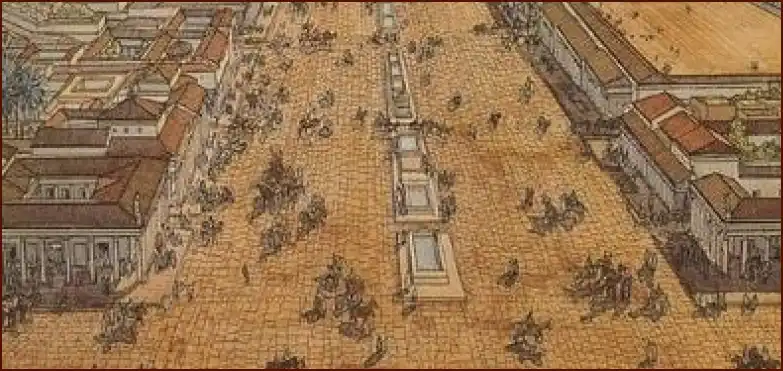The Hellenistic period was not only a golden age for poetry and scholarship but also an era of unprecedented scientific advancement. The intellectual environment fostered by institutions like the Library and Mouseion in Alexandria blurred the lines between disciplines, creating a unique link between Hellenistic science and literature. The same spirit of inquiry, meticulous research, and categorization that drove literary scholarship also fueled groundbreaking discoveries in mathematics, astronomy, and engineering.
Table of Contents
To see this link is to understand that the Hellenistic world did not place a rigid barrier between the “two cultures” of arts and sciences. Poets were often scholars, and scientists were part of the same intellectual community, all contributing to a vibrant culture of knowledge centered in Alexandria.
🧠 The Mouseion: A Hub for All Knowledge
The heart of this intellectual fusion was the Mouseion of Alexandria. This state-funded research institute supported scholars from every field, providing them with salaries, accommodation, and access to the unparalleled resources of the Library. This structure encouraged interdisciplinary thought and collaboration.
Here, literary scholars worked alongside some of the greatest scientific minds in history:
- Euclid (fl. c. 300 BC): The “father of geometry,” whose *Elements* became the standard textbook for mathematics for over two millennia.
- Archimedes of Syracuse (c. 287–c. 212 BC): A brilliant mathematician, physicist, and engineer who made foundational discoveries in mechanics and hydrostatics.
- Eratosthenes of Cyrene (c. 276–c. 194 BC): A true polymath who was not only a poet and literary critic but also the head librarian and a pioneering geographer who calculated the Earth’s circumference.
The presence of these figures in the same institution as poets like Callimachus and Apollonius created a dynamic intellectual atmosphere where different fields of knowledge could influence one another.
📜 A Shared Method of Inquiry
The link between science and literature in this period can also be seen in a shared methodology. The work of the literary scholars in Alexandria—collecting manuscripts, comparing variants, writing commentaries, and creating catalogs—was a systematic and empirical process. It was a “science” of literature that aimed to establish accurate texts and organize knowledge in a rational way.
This same impulse toward systematization and comprehensive collection is visible in the scientific works of the time. Callimachus’s *Pinakes*, a 120-volume catalog of literature, shares an intellectual kinship with the systematic botanical and zoological studies that were also being conducted. Similarly, the meticulous attention to detail and polish in a Callimachean poem is not so different from the logical precision required in a Euclidean proof. Both are products of an intellectual culture that valued rigor, erudition, and the systematic pursuit of knowledge in all its forms.
More Topics
- How Philosophy Influenced Hellenistic Writing
- How to Understand the Hellenistic Book Roll
- How to Read Hellenistic Didactic Poetry
- How Literary Rivalry Shaped Hellenistic Poetry
- How to Appreciate Hellenistic Women Poets
- How Scholarship Became Literature in the Hellenistic Era
- How Royal Patronage Shaped Hellenistic Literature

